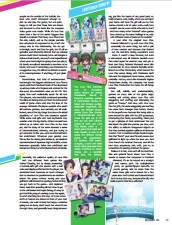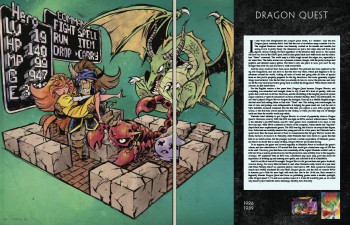First off, here are screenshots of all three, in the intro dialogue between Richter and Dracula, taken straight from emulators in the first two cases, and directly from the PSP in the last one.

PlayStation

Saturn

PlayStation Portable
The most significant thing to notice right off the bat is how much skinnier the PlayStation version is. (You can also see how the dialogue window is dithered in the Saturn version, rather than truly transparent, one of the many ways you can see how shoddily that port was programmed, but that's neither here nor there in this discussion.) It's skinnier because it runs in the PlayStation's low resolution mode. The PlayStation can output several resolutions - right here it's 256x240 (though it doesn't take up the whole display so it's more like 256x208), but it can run in 320x240, 512x240, and even 640x240. Some 3D games use the higher resolutions, and sometimes games even switch between resolutions, like title screens for example. Even Symphony of the Night runs its "prologue text" screen at a higher resolution. The idea is that since you can fit more pixels on the screen, the overall image has more detail.

Anyway, 256x240 is the lowest the system will allow. This is similar to the NES, SNES and PC Engine, which run at 256x240 or 256x224. However, standard definition televisions run at a 4:3 ratio, which means those dimensions don't quite match. 320x240 is proper 4:3, but SDTVs can scale the image appropriately to the proper proportion by adjusting the shape of the pixels, making them slightly oblong. That's why everything looks slightly skinnier in this screenshot than they would on a television - they're supposed to be about 20% wider.
Things get dicey when we get to the Saturn version:

The problem here is that the Saturn doesn't support 256x240 - the lowest resolution it allows is 320x240. So how do you fit a 256x240 image in a 320x240 resolution? Keep in mind that pixels, when rendered internally, are square - you cannot simply make them oblong like the TV does. Your options are (A) pillarbox the screen so it's black on both side edges, (B) reprogram the game to take advantage of the extra space, or (C) stretch the image to make it fit the whole horizontal screen. The Saturn versions opts to stretch the image, since pillarboxing would seem cheap, and as you can see, it looks terrible. (Though you can see where some extra pixels are displayed at the bottom of the image, so it does seem like there was some small attempt at expanding the viewing area.) You can easily pick out the pixel distortion pretty much everywhere, since some vertical lines are doubled, and others aren't. Granted, it doesn't look QUITE this bad on a television since the fuzzy display blurs things a bit, but it's still visibly worse than the PlayStation release.
Now, the PlayStation Portable version on Dracula X Chronicles:

There are two display sizes in the PSP version. We're going with the smaller one, since that one is closest to the original resolution. Due to the portable screen, the PSP can only run in one resolution: 480x272. By this point, most developers were confident that gamers knew the difference between standard 4:3 and widescreen, and would accept that games originally designed for a standard def TV would look awful fully stretched to the PSP resolution. (Didn't stop them from screwing up Valkyrie Profile or Final Fantasy Tactics, but that's a different issue.) So, pillar/letterboxing is generally seen as acceptable. However, it still doesn't run in 256x240 like the PlayStation version - instead, it's stretched to the same 320x240 resolution as the Saturn version. The difference is that the picture is filtered, something the Saturn couldn't do and counted on the TV to take care. This technique blurs the whole screen slightly but obscures the pixel distortion seen in the Saturn version. This was probably done to keep the proper ratio as you'd see on the TV, at the expense of image quality. (As illustrated in this post from two years ago, the PC Engine Dracula X emulation runs at 296x224, which doesn't keep the 4:3 ratio nor does it use the original 256x224 resolution it originally ran at, so neither is really correct, and looks blurry to boot.)
The only thing I haven't tried is the PlayStation version of Symphony of the Night running on the PSP. How does it display its pixels? Is it in the proper resolution or is it stretched like the Chronicles port? Again, all pixels are square on the PSP screen - they can't be made oblong.
Anyway, why didn't Symphony of the Night run in 320x240 originally? Technical issue, perhaps? It certainly would've avoided this issues down the road, but clearly they didn't plan for that.
On a related note, this article on the Doom Wikia explains a bit more about the ratio that Doom was developed for, and what we see rendered in screenshots now.























